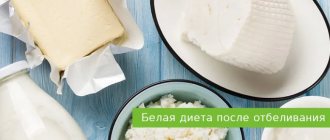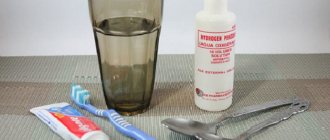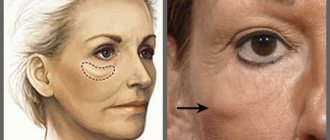1437
The desire to have a beautiful smile that reveals even, snow-white teeth is completely natural.
However, insufficient hygiene procedures, incorrectly selected oral care products, as well as many other factors lead to the fact that the enamel - the protective shell of the teeth - darkens or acquires a yellowish-brown tint over time.
One of the most popular substances for lightening tooth enamel is considered to be ordinary baking soda, which is used both independently and in combination with other components.
How does it affect enamel?
Baking soda or sodium bicarbonate is a slightly alkaline compound. Physically, it appears as small white crystals. The use of this substance for whitening tooth enamel is based on its abrasive and disinfectant properties.
First of all, soda removes even hard plaque, completely cleansing the enamel . This is what gives the whitening effect.
In addition, after using it, most of the bacteria that are involved in creating plaque are destroyed in the oral cavity.
However, at the same time, as a strong abrasive, soda removes not only surface deposits, but also particles of enamel, which can lead to thinning and hypersensitivity of teeth.
Rules for caring for teeth after filling
Types of fillings and care features
In the first days after filling
If the filling is temporary
Why does a tooth hurt after installing a filling?
Why is a preventive examination necessary?
A filling cannot replace tooth enamel. No matter how similar it may be in appearance, in terms of its characteristics and properties the filling is significantly inferior to native enamel. First of all, because it has a service life. A filling can protect a tooth for about 3 to 5 years, then it will have to be replaced. With good care and proper installation, the filling can last longer than expected. We'll tell you how to properly care for your teeth after filling, so you don't have to run to the dentist ahead of time.
Precautions for use
The negative impact on enamel can be minimized by following a few simple rules when using sodium bicarbonate to lighten teeth:
- It is advisable to be very careful when using this substance in large quantities in its pure form.
- After the procedure, you must rinse your mouth thoroughly with clean warm water.
- Immediately after bleaching, during the first hour, you should not take very hot or cold food and drinks, as well as foods that contain strong dyes.
- Procedures cannot be carried out daily for a long time.
Remember also that a properly chosen diet will help strengthen the enamel and saturate it with essential microelements. It is advisable to begin such strengthening a few weeks before the start of bleaching.
Advantages and disadvantages of soda treatments
It should be said that this method of whitening actually gives visible results . This is evidenced by its enormous popularity.
Teeth whitening with soda: before and after photos
The advantages include:
- cheapness and availability;
- the ability to use at home without going to the clinic;
- fast and noticeable results.
However, one should not forget about the negative aspects of using the technique.
Here are its main disadvantages:
- short-term result (quite quickly, without maintenance, the effect goes away);
- possible manifestations of allergic reactions;
- irritation of the oral mucosa;
- risk of bleeding gums;
- thinning of the enamel.
Do you doubt whether teeth whitening is harmful? Read a comparative review of existing methods.
In a separate publication, we have collected recipes for whitening with soda and hydrogen peroxide.
We will tell you how to whiten your teeth at home here https://www.vash-dentist.ru/krasota-i-uxod/otbelivanie/chem-mozhno-bez-vreda-zubyi-v-domashnih-usloviyah.html. Reviews on the use of folk and professional remedies.
How to use to achieve natural whiteness?
Does baking soda whiten teeth and how to do it? This home remedy can be used alone or as just one component of an enamel lightening product.
Methods
First, let's talk about the three main ways to use it .
They can be combined with each other, choosing for yourself which combination or method is more suitable, taking into account individual characteristics and personal perception of the main active component.
So, baking soda can be used:
- In its purest form
. This refers to the powder itself, not diluted with any other components.It can be used by those people for whom contact with a large amount of soda on the mucous membrane does not cause discomfort, burning and pain, as well as bleeding.
- As a concentrated solution
. Of course, the solution will be used to rinse the mouth.It is quite simple to prepare - a certain amount of powder is completely dissolved in warm water. If the next portion of soda in the liquid is already poorly soluble, it will be a concentrated composition.
- Mixed with other ingredients
. Various components in combination with simple baking soda can significantly enhance and prolong the whitening effect.Each such mixture requires a special approach and a specific preparation technique, which will be discussed further.
The first, simplest, method gives a very good and quick result, but it is advisable to use it no more than once a week or 10 days.
Recipes
The methods describe the use of sodium bicarbonate in home enamel whitening in general. Therefore, specific recipes will also be useful .
- Paste.
One of the most popular whitening recipes is preparing a special toothpaste.Sodium bicarbonate is added to a small amount of paste sufficient for one-time cleaning in a ratio of two to one (two parts of the paste). The resulting composition simply cleans your teeth well.
- Cleaning with soda.
The simplest recipe that does not require preparation. Apply a little powder to a soft brush dipped in water. After this, the teeth are brushed with the usual sweeping movements. The duration of the procedure is about 1 minute.In this case, the product will definitely get on the mucous membrane, so after the procedure you need to rinse your mouth well.
- With the addition of coal.
You can take sifted wood ash. However, it is easier to use an inexpensive and accessible pharmaceutical product - ordinary activated carbon. It has the same properties as the mentioned ash.In a dry container, mix an equal amount of soda and powdered charcoal tablets. This mixture is used with the same recommendations as just baking soda powder - applied to a soft brush and carried out regular cleaning.
- Gauze swabs.
This recipe is suitable for those who have some tooth sensitivity. It does not give a strong abrasive effect, so the whitening will be soft, but longer lasting.In a small gauze swab, generously moistened with water, you need to wrap a spoonful (as much as you can fit, depending on the size of the swab) of soda. After a few minutes, the powder will dissolve a little and the procedure can begin.
A swab is simply used to wipe all surfaces of the teeth, avoiding the mucous membrane of the palate and gums, as well as the tongue.
- Lemon juice.
To prepare the whitening mixture, add lemon juice to the soda at the rate of 3-5 drops per half teaspoon. Dip a brush or a thick gauze swab into it, and then rub it separately into the enamel of each tooth, being careful not to press too hard.Lemon enhances the effect, and also perfectly refreshes the mouth and muffles the unpleasant taste of soda. Instead of a gauze swab for sensitive teeth, it is recommended to apply the composition using the pad of the index finger, then the effect will be softer.
- Rinse.
It is better to rinse with a concentrated solution. The technique for its preparation is described in the bleaching methods above. The procedure is carried out with no less than a full glass of solution before or after cleaning with a regular paste.To achieve the effect, such rinses must be systematic. For those whose teeth quickly darken, it can be used in courses of 10–12 days every month.
- Strawberry.
Garden strawberries contain a lot of useful substances. They simultaneously enhance the brightening effect and soften the effect of the abrasive, removing its unpleasant aftertaste.For cooking you will need 2-3 fresh small berries. They need to be washed thoroughly and kneaded with your hands into a homogeneous paste. Add a pinch of soda powder to it and mix thoroughly.
The final composition should have a paste-like consistency. They are cleaned using a brush with soft artificial bristles.
The procedure should be carried out once a day (preferably before bedtime). The course lasts, depending on individual needs, from 7 to 15 days.
- Iodine solution.
This is another inexpensive pharmacy product that, in combination with sodium bicarbonate, can give an amazing effect.Add 2-4 drops of a classic 5% iodine solution to a teaspoon of powder. Stir using a plastic or wooden stick.
The resulting mixture is gently rubbed into the surfaces of the teeth with massaging movements and left for 3-5 minutes. In addition to the whitening effect, the use of this composition will also help get rid of various bacterial diseases of the oral cavity.
- Vinegar.
A good effect can be achieved by using a mixture of vinegar and soda to apply to the enamel surface.A solution of edible vinegar is gradually added dropwise to a small amount of powder until a viscous soft mass is formed. It needs to be gently rubbed into the enamel, wait a few minutes and rinse well by rinsing your mouth.
The last recipe will appeal to those who may have allergic reactions to iodine.
Watch the video for the process of preparing a mixture for teeth whitening with baking soda and lemon:
Professor Neumyvakin's method
He partially repeats the recipe described earlier with the addition of lemon juice to the soda. However, Neumyvakin took it as a basis and modified it. In this case, another component is added - peroxide.
Recipe:
Combine half a teaspoon of baking soda in a container, add 15 drops of a 3% peroxide solution and 5 drops of fresh lemon juice. Mix all components until smooth.
Application:
using a cotton pad, the resulting mixture must be carefully applied to the external, internal and chewing surfaces of all teeth, without touching the soft tissues. The composition must be thoroughly rubbed in, making gentle circular movements.
After this, you need to spit out the remaining product and do not drink or eat for 15 minutes after the procedure. Then the mouth should be rinsed well with warm, clean water.
Is activated charcoal effective for teeth whitening? Properties of the drug and precautions.
In this article we will tell you what disadvantages are noted in reviews of laser whitening.
Which pencil to buy for teeth whitening, read here https://www.vash-dentist.ru/krasota-i-uxod/otbelivanie/karandashi/zubov-nyuansyi-primeneniya-vidyi-i-otzyivyi.html. Review of various manufacturers.
Types of fillings and care features
Different fillings have their own characteristics in terms of wearing time, hardening, etc. For example, light fillings harden under the influence of a halogen lamp in a matter of seconds, so you can eat or drink water almost immediately after the procedure. However, you should not remove all restrictions: complete hardening of the filling occurs in two days. Composite fillings are very sensitive to alcohol at first, so you should avoid alcohol and alcohol-containing rinses, as the filling may soften.
After treatment, we recommend that you check with your dentist about the type of filling he placed and after what time you can eat.
Opinions about the method
Baking soda, as the main ingredient in many dental whitening recipes, is used by many patients who do not want to go to the dental office. Moreover, there are much more positive reviews .
You can share your experience of using this substance to lighten enamel with other readers by leaving a comment on the article.
If you find an error, please select a piece of text and press Ctrl+Enter.
Tags at home teeth whitening recipes soda
Did you like the article? stay tuned
Previous article
How to strengthen gums at home: tips, recipes, recommendations
Next article
Recommendations for using the Waterpik WP 450 portable irrigator
The effects of smoking on teeth
In addition to the aesthetic point of view, the influence of tobacco can provoke dozens of pathological processes in the oral cavity. Most often, smokers have to deal with the following issues:
- Constant dry mouth leads to active growth of bacteria, so if you have this bad habit, be prepared to fight tooth decay.
- If you want to restore a missing tooth using implants, the success rate of engraftment of the metal structure is significantly reduced.
- Over time, the surface plaque turns into hard deposits, which can only be removed in a dental office.
- According to statistics, gum disease is more common among smokers. At best, you will have to deal with increased sensitivity and bleeding; at worst, periodontal disease or periodontitis will develop.
Write a comment
Tatiana
February 9, 2016 at 10:52 pm
Sodium bicarbonite is my favorite helper in everything at home, as it is relatively harmless. I didn’t use it for whitening, or rather I didn’t realize, but the whole family used it for cleaning teeth for a long time during the terrible hard times of the 90s, when everything simply disappeared from the shelves, including toothpaste. The condition of the teeth did not worsen, although they intuitively understood that there was no need to rub too much and be sure to rinse generously. After reading the article, I remembered its effectiveness and decided to mix dental mint powder with baking soda, apply the mixture to the teeth and leave for 5 minutes. Afterwards I brushed it a little and rinsed thoroughly. The result appeared immediately.
Alexandra
February 11, 2016 at 9:27 pm
Soda certainly gives its results. 2 years ago I dreamed of a snow-white smile, and without hesitation I went to the clinic. Since I have rather sensitive teeth, the attentive doctor did not impose whitening, so as not to further thin the enamel. At first I was a little upset, but after reading a lot of positive reviews, I decided to try home whitening with soda. The effect surprised me. My teeth became much whiter and didn’t hurt at all. So I recommend it to all readers who are still looking for their own method of solving this problem. Good luck!
Anna
June 2, 2016 at 7:54 am
Tooth powder is almost impossible to find on sale, which is a pity. I found it once in my life in a children's store, and never saw it again. At home I whiten my teeth with soda, because in dentists they do cleaning with it, also under pressure. So what's the difference? Moreover, pastes sometimes contain soda, so I think there will be no harm. I also tried to whiten with lemon, but my teeth became more sensitive to cold water.
Natalia
November 14, 2016 at 8:12 am
I tried many traditional methods in order to get a white-toothed smile. But all home methods (soda, activated carbon, peroxide, lemon juice, etc.) give only short-term insignificant results, and besides, the teeth become very sensitive. Several times a week I brush with toothpaste and baking soda to better remove plaque, but I still have to go to the dentist for whiteness.
Elena
May 16, 2022 at 12:05 pm
I personally tried to whiten my teeth at home. Namely soda. The result shocked me. In just a couple of uses, my teeth became a shade, or even two, whiter, and the yellowness from coffee disappeared. I used it this way: I poured a little baking soda on my brush and toothpaste and brushed it. This should be done no more than once a week, otherwise sensitivity will appear on the gums.
Olga
November 27, 2022 at 10:15 pm
Oh, it turns out there are simply a lot of options for such whitening. At one time I tried the Neumyvakin method. My teeth actually became a little whiter. But it became a little scary for the enamel and I put this method aside. I think I'll try again. But still, in my opinion, this method is good for removing plaque. No more.










